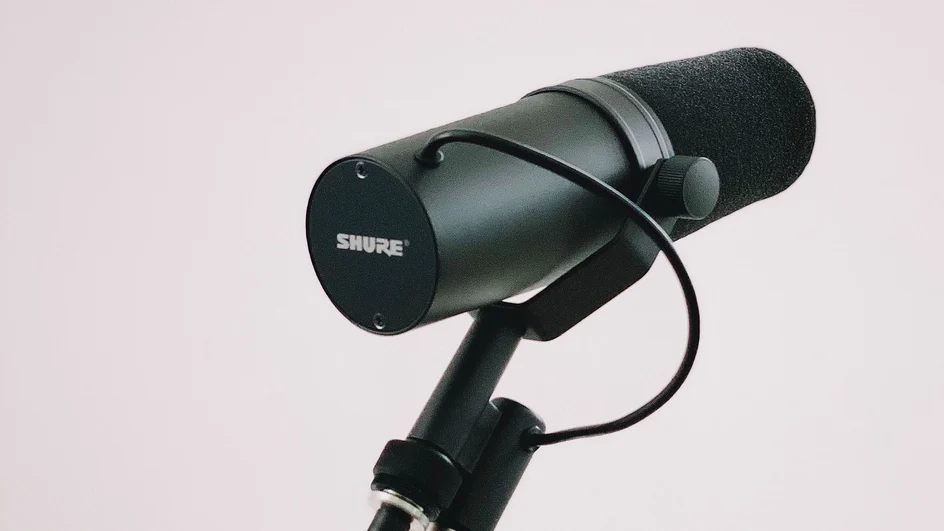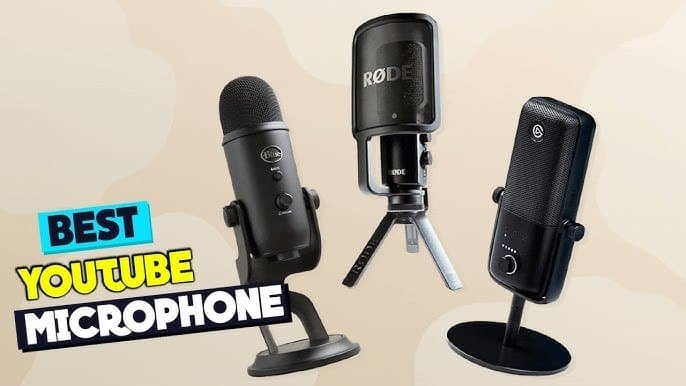What’s up bro! Are you tired of microphones that don’t quite capture your voice the way you want? Do you have a graveyard of unwanted mics? Choosing the right microphone for your talking head videos is crucial for achieving great audio quality, but it can be a tricky process. With so many options available, how do you find the perfect balance between quality, budget, and ease of use? This guide provides a simple formula to help you select the best microphone for your specific needs and preferences.
The Smart Formula: Your Personal Guide to Microphone Selection
The formula is based on your personal choices and a system that helps you find the perfect type of microphone. This formula acknowledges that what works best for one person may not be ideal for another. Your individual needs and preferences should guide your choice.
- Best Quality: Prioritizes superior audio capture.
- Budget: Focuses on affordability.
- Ease of Use: Emphasizes simplicity and convenience.
It is essential to recognize that these three factors are interconnected. Choosing one will inevitably affect the others. It’s nearly impossible to find a microphone that excels in all three areas simultaneously. The first step is to determine what is most important to you.
Don’t Make the Same Mistakes!
Many people buy microphones based on recommendations from popular creators, only to find that the microphone doesn’t suit their needs. This highlights the importance of choosing a microphone that is right for you, not just one that is popular. Applying a personalized formula can prevent you from wasting money on microphones that don’t meet your expectations.
The Top 3 Microphone Types for Talking Head Videos
These are the most popular and best types of microphones for talking head videos:
- Studio Microphones: Known for their exceptional sound quality.
- Shotgun Microphones: Versatile and directional microphones.
- Lavalier Microphones: Small, discreet microphones that clip onto clothing.

Quality, Budget, or Ease of Use? What’s Your Priority?
The order in which you should consider these microphone types depends on your primary focus.
Quality is King!
If quality is the most important factor, the recommended order is:
- Studio Microphone: Studio microphones are designed to capture sound near the capsule, resulting in a richer, more detailed sound.
- Shotgun Microphone: While also very good, shotgun microphones are typically positioned farther away, which may result in slightly less richness and more ambient noise.
- Lavalier Microphone: Lavalier microphones can provide decent sound, but their small, omnidirectional capsules tend to pick up more reverb and ambient noise.
On a Tight Budget?
If your primary focus is budget, the recommended order is:
- Shotgun Microphone: A decent shotgun microphone can be found for between $50 and $100.
- Lavalier Microphone: A wired lavalier microphone can be found for under $50.
- Studio Microphone: A good studio microphone is unlikely to be found at a budget price.
Keep it Simple!
If ease of use is your primary focus, the recommended order is:
- Lavalier Microphone: Lavalier microphones are easy to connect directly to a camera, eliminating the need for syncing in post-production.
- Shotgun Microphone: Shotgun microphones can also be connected directly to a camera, but require more careful positioning.
- Studio Microphone: Studio microphones require separate recording and syncing in post-production, making them the most complex to use.
Two Big Questions That Will Change Everything!
Answering the following questions will further refine your microphone selection:
- Do you want the microphone in your shot?
- Yes
- No
- Doesn’t matter
- Does your recording room have reverb or echo?
- Yes
- No
The Formula in Action: Real-World Scenarios
Here’s how to apply the formula based on your answers to the above questions:
Scenario 1: Quality is Key
- Priority: Quality
- Microphone in Shot?: Doesn’t matter
- Room Reverb?: Doesn’t matter
In this case, a studio microphone is the best choice. It provides the highest quality audio, and the presence of the microphone in the shot is not a concern.
Scenario 2: Quality Matters, but the Mic Shouldn’t Be Seen
- Priority: Quality
- Microphone in Shot?: No
- Room Reverb?: Yes or No
A professional shotgun microphone is recommended. You will need to learn how to boom it correctly, use a good audio interface, and record the audio separately. Be aware that prioritizing quality will increase the price and require more work in post-production.
Scenario 3: Budget-Conscious with Reverb
- Priority: Budget
- Microphone in Shot?: Doesn’t matter
- Room Reverb?: Yes
A 3.5mm jack shotgun microphone is the best option. While the sound quality may not be the best, it’s a cost-effective choice. You’ll need to boom the mic correctly to improve the sound.
Scenario 4: Budget-Friendly and Echo-Free
- Priority: Budget
- Microphone in Shot?: Doesn’t matter
- Room Reverb?: No
A wired lavalier microphone with a long cable connected directly to the camera is a great choice. It’s easy to use and provides decent sound on a small budget.

Scenario 5: Budget and No Mic in Shot, but There’s Reverb
- Priority: Budget
- Microphone in Shot?: No
- Room Reverb?: Yes
A 3.5mm jack shotgun microphone is the perfect option. It requires booming, but it’s the best way to stay within budget while minimizing reverb.
Scenario 6: Easy to Use, No Mic in Shot, and No Reverb
- Priority: Easy to Use
- Microphone in Shot?: No
- Room Reverb?: No
A wireless lavalier microphone is the top choice. It’s incredibly easy to use, and its small size makes it barely noticeable.
Scenario 7: Simplicity is Key, Reverb is Present
- Priority: Easy to Use
- Microphone in Shot?: Doesn’t matter
- Room Reverb?: Yes
A USB studio microphone is recommended. It requires audio syncing in post-production, but it’s the best way to achieve good sound while keeping things simple in a reverberant room.
Microphone Recommendations
Here are some specific microphone recommendations based on the video:
- Good Studio Microphone: sE Electronics DM1.
- It costs $264.
- It doesn’t require a pop filter.
- It is easy to use.
- It is versatile and has an internal preamp.
- USB Studio Microphone: Gato Wave 3.
- It costs $139.
- It is affordable.
- Professional XLR Shotgun Microphone: Audio Technica 8875R.
- It costs $169.
- Affordable Shotgun Microphone: Rode VideoMic Go.
- It costs $99.
- Cheap Wired Lavalier Mic: Audio Technica ATR3350xiS.
- It costs $59.
- Wireless Lavalier Mic: Rode Wireless Pro, Rode Wireless Go, or Rode Wireless ME.
Don’t Stop at the Mic!
Achieving the perfect sound for your talking head videos requires more than just the right microphone. Pay attention to the other crucial steps.
Conclusion
Selecting the right microphone for your YouTube talking head videos doesn’t have to be a shot in the dark. By understanding your priorities—quality, budget, or ease of use—and considering the acoustics of your recording environment, you can confidently choose a microphone that elevates your content. Don’t fall for the trap of blindly following recommendations; instead, use the smart formula to find the perfect microphone that suits your unique needs.
FAQs
What if I can’t decide between quality and budget? Consider starting with a mid-range option that offers a balance of both. You can always upgrade later as your channel grows and your budget allows. The Rode VideoMic Go or the Audio Technica 8875R would be good choices.
How important is the recording environment? The recording environment plays a significant role in the final audio quality. If you have a room with a lot of echo, consider using acoustic panels or other sound-dampening materials to improve the sound.
Do I really need to sync audio in post-production? If you choose a studio microphone, syncing audio in post-production is necessary. While it may seem like an extra step, it allows you to achieve the best possible sound quality.

